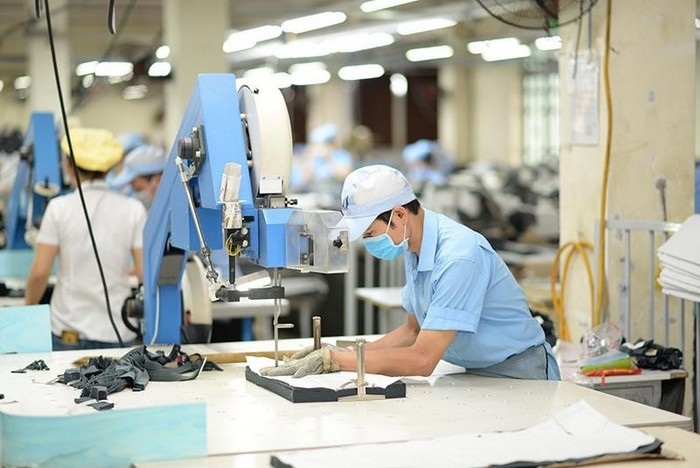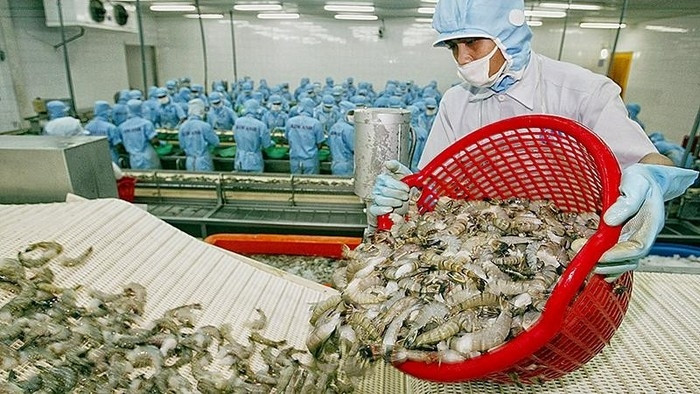Export growth thanks to CPTPP
Thanks to good quality and the advantages of the deeply reduced tax rate, shrimp is one of the most popular items in the Canadian market. According to the Vietnam Association of Seafood Exporters and Producers (VASEP), shrimp exports to Canada recorded the highest growth rate compared to the remaining markets in the CPTPP bloc as of May 15, 2022. Canada is now the third largest importer of shrimp from Vietnam in this bloc, accounting for 22% of Vietnam's total shrimp exports to this CPTPP market.
Since the CPTPP took effect in 2019, Vietnam’s shrimp exports to Canada continuously increased. Accordingly, the shrimp export turnover to Canada reached 180 million USD in 2021, up 18% over 2019. By the first half of May this year, shrimp exports to this market also recorded a growth of 87% over the same period last year, reaching 100 million USD.
“There are about 80 shrimp exporters to Canada, including the largest, such as Minh Phu Seafood Corp, Minh Phu – Hau Giang, Stapimex, Vina Cleanfood and Cuu Long Seapro”, said VASEP’s General Secretary Truong Dinh Hoe.
In addition to shrimp, many other commodities from Vietnam such as textiles, footwear and agricultural products have experienced high growth in exports to CPTPP member countries, especially new markets including Canada, Mexico and Chile. Vo Hong Anh, Deputy Director of the European - American Market Department under the Ministry of Industry and Trade, said among four American countries participating in the CPTPP (Canada, Mexico, Peru and Chile), Canada, Mexico and Peru signed FTAs with Vietnam for the first time and Chile formed bilateral FTAs with the country.
“Since the CPTPP took effect in January 2019, Vietnam has witnessed a tremendous growth in Vietnam's exports to CPTPP member countries, especially in the Americas”, said Vo Hong Anh. Specifically, Vietnam’s exports to Canada reached 5.1 billion USD in 2021, a year-on-year increase of 20.8%. Meanwhile, the country’s export turnover to Mexico hit 4.6 billion USD last year, an increase of over 100% during the period before the agreement.
It can be said that Vietnamese enterprises have been exploiting effectively the incentives from the CPTPP. Handsets and components hold the largest proportion of Vietnam’s export structure to the CPTPP member markets (accounting for 20%), followed by computers and electronic items (16%) and machinery and equipment spare parts (9%).
In terms of textiles and footwear, Vietnamese exporters have enjoyed a tariff advantage of 10-20% compared to their direct competition, thanks to the advantages of the CPTPP.
Another commodity with great potential is seafood as most CPTPP members have committed to reducing tariffs to 0% within 0-3 years. The coverage of Vietnamese seafood in the markets has increased markedly.

Vietnam has become one of the five largest exporters of wooden furniture in the Canadian market.
In addition, thanks to preferential tariffs, Vietnam is now one of the five largest exporters of wooden furniture in the Canadian market. The country is also strong in exporting bags, suitcases, umbrellas and agricultural products such as tea, cashew nuts, coffee and pepper.
Advantages from not only exports
Besides the advantages, the enterprises have faced many difficulties in their exports to this market region.
For example, with cement products, Assoc. Prof. Dr. Luong Duc Long, Vice President and Secretary General of the Vietnam Cement Association, shared that promising markets in the CPTPP bloc are Chile, Mexico and Peru. However, the difficulty in these markets is transportation due to their remote locations. However, not all 10 countries have great demand for cement. In addition, many countries are facing difficulties due to the long distance. Especially the high price of ships over the past 2 years was also one of the many obstacles for Vietnamese products.
According to Dr. Le Duy Binh, Managing Director of Economica Vietnam, the biggest barrier for businesses in taking advantage of the CPTPP is the regulation on the origin of goods. This required enterprises to make an appropriate process from production, raw material purchase and cultivation following standards, as well as gather documents to prove the origin of goods and geographical indications.

Textile and garment sector has effectively taken advantage of the CPTPP.
In addition, there are several other problems including competitiveness and resources of enterprises. For example, to meet the requirements of preferential tariffs on rice exports, enterprises must meet the requirements of capital and technology. Meanwhile, in terms of textiles, it is not easy to meet the criteria of raw materials.
The CPTPP was designed to promote trade among member countries. Over the past years, Vietnam’s concern has been to access and expand to the CPTPP's partners, especially markets where we have not signed FTAs. The country has achieved very positive and very encouraging results.
However, Vietnamese enterprises must improve their competitiveness as well as make a good preparation for the fiercer competition from CPTPP markets and member countries of other agreements in the domestic market.
It is essential to consider this as an opportunity to innovate and upgrade the capacity of Vietnamese enterprises, notably in terms of production processes, to meet the criteria of sustainability, labour, innovation and productivity. This will be the advantage they gain from the pressure of integration, thereby having stronger competitiveness in the domestic market and capacity to penetrate markets besides the CPTPP.
Dr. Le Duy Binh said, the CPTPP has been creating more opportunities to attract higher quality investment from CPTPP members. Therefore, if the opportunities are taken advantage of, the quality of investment in Vietnam will be increased. On the contrary, in the future, businesses can invest in CPTPP countries, not just focusing on import and export growth, he added.
















